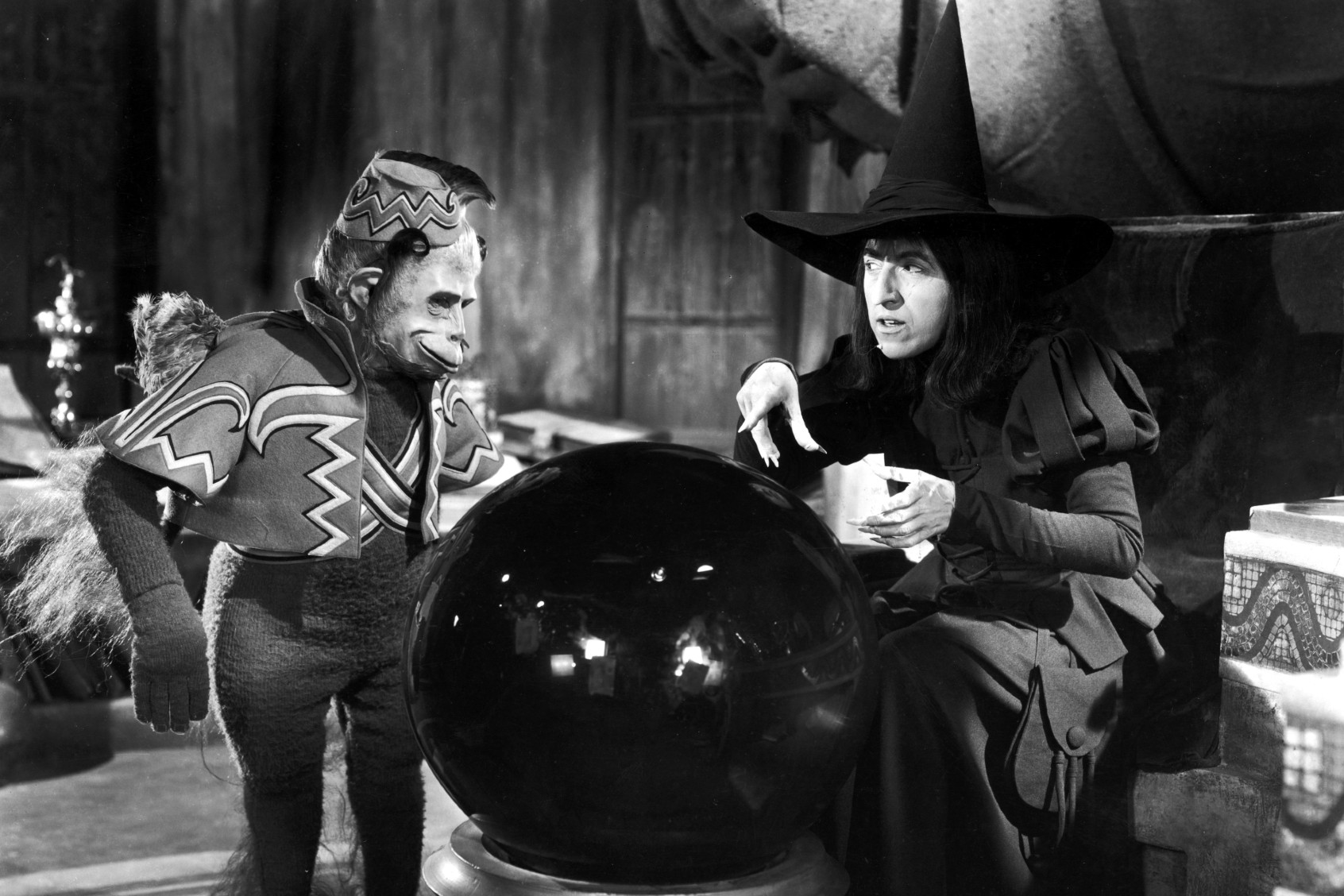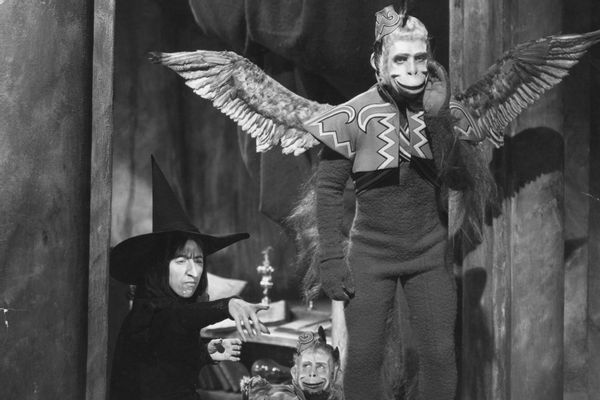
In 1939, when Victor Fleming's MGM adaptation of L. Frank Baum's 1900 children's novel, "The Wizard of Oz" debuted in theaters, American families were provided the opportunity to momentarily transport themselves away from the grim reality of World War II into another land, just over the rainbow, where the biggest concerns were flying monkeys and a green-faced witch — the original Karen — who hated dogs and was willing to risk it all for a pair of shoes.
Born seven years after the release of this film, David Lynch would one day mark the event of witnessing Dorothy (Judy Garland) journey from her home in rural Kansas to a place of pure, unexplainable imagination as being formative in his own work as a painter and filmmaker. And in all that, there grew an apparent fascination with monkeys. Not so much monkeys with wings, but monkeys put in close proximity to creamed corn and lots and lots of cigarettes.

In "LYNCH/OZ," a documentary by Alexandre O. Philippe features director Karyn Kusama ("Jennifer's Body," "Destroyer," "Yellowjackets") — along with other directors who are fans of Lynch's work such as John Waters and David Lowery — as narrators breaking down how elements of things discovered along the yellow brick road found their way into "Twin Peaks," "Mulholland Drive," "Lost Highway" and several other of his projects.
During Kusama's section of the doc, she tells the story of seeing "Mulholland Drive" for the first time at the New York film festival in 2001 and hearing Lynch speak during a Q&A afterwards in which he said, "There is not a day that goes by that I don't think of 'The Wizard of Oz.'"
Elsewhere in "LYNCH/OZ," there are segments that pay great attention to the winds, bold-colored velvet curtains and ruby-red shoes that pop up again and again in Lynch's creations, but I was surprised by the lack of monkey talk. He's definitely got a thing for them, and it seems pretty clear where it came from.
"The Wizard of Oz" was surprisingly a bit of a flop in theaters, not picking up steam until it began to air on television starting in 1956, after which point it aired regularly and became a family viewing tradition.
When I first watched it as a child, it was during one of the many summers I spent at my grandparent's farm in rural Illinois. I can easily recall the experience of lying on the carpet of their living room, wiggling my feet along with the now classic soundtrack, occasionally looking out the floor to ceiling window that faced out toward nothing but technicolor green grass and cornfields as far as the eye can see. In this sense, my experience was probably a lot like Lynch's. Seeing the Wicked Witch of the West (Margaret Hamilton) gazing into her magic ball and then dispatching her army of flying monkeys to hunt down Dorothy, the Scarecrow (Ray Bolger), the Tin Man (Jack Hayley) and the Cowardly Lion (Bert Lahr), I experienced a tremendous fear that stuck with me, making it so that I'd never again be able to see a simian in the same way – henceforth suspecting them of being up to no good, one strong leap away from taking flight and wreaking havoc.
For Lynch, these early inklings of horror formed a block to be cemented within his building of a mental structure that would house everything he took in from the outside world and turned into unmatchable content. Filtered through the lens of his keen inner mind, swirling into a whirlwind as he honed his craft, and one day cycloning through the roof, "Oz" cracked open a vastness of exploration that he'd later delve into even deeper through his practice of transcendental meditation.
Lynch often describes his practice of using meditation to gather creative ideas as "catching the big fish." But there were some big monkeys caught in there too.

"I think every time you do something like a painting or whatever, you go with ideas. And sometimes the past can conjure those ideas and color 'em," he said. "Even if they're new ideas, the past colors them."
Going by this, when Lynch not so randomly inserted monkeys into "Twin Peaks: Fire Walk With Me" or created a Netflix short in 2017 called "What Did Jack Do?" which centered on himself as a detective interrogating a small monkey who had committed a murder, his past experience with "The Wizard of Oz" was guiding his hand, coloring in what his subconscious mind was sketching.
In one of my favorite behind-the-scenes clips of Lynch, which you can watch here, at the 1:55 mark, he's speaking to someone just off screen, listing off filming elements for an unnamed project that he needs them to go out and fetch.
Hand over his eyes, in deep concentration, Lynch ask for a one-legged 16-year-old girl, "A Eurasian girl who's beautiful and a pet monkey."
A peek behind the curtain could reveal the meaning behind his vision there. But that would take the magic out of it, wouldn't it? Only the great and powerful Oz can know. But if you think of Oz as our own potential for creative imaginings, we already know. All roads lead back to flying monkeys.







